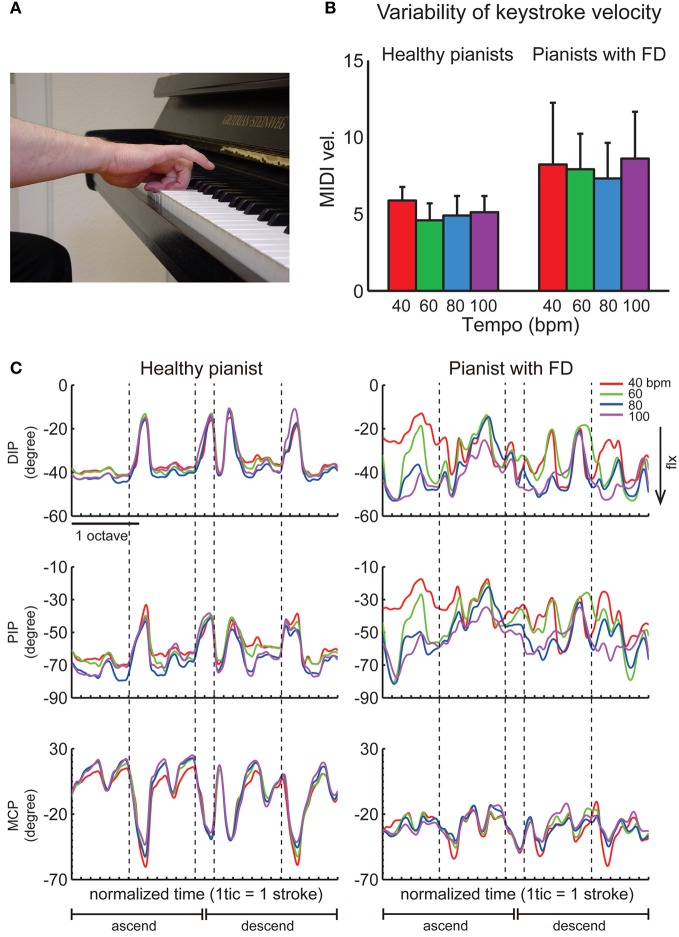Figure 3.
(A) A typical symptom of an involuntary hyper-flexion of a pianist with focal dystonia. (B) A group mean of variability of the keystroke velocity across 10 healthy pianists (left) and 10 pianists with focal dystonia (right) during playing a C-major scale with the right hand at four different tempi [40, 60, 80, and 100 beat per minute (BPM)]. (C) The time-varying waveforms of the angles at the distal-interphalangeal (DIP), proximal-interphalangeal (PIP), and metacarpo-phalangeal (MCP) joints of the ring finger of a healthy pianist (left panel) and a pianist having the ring finger affected (right panel) during playing a two-octave C-major scale in both ascending and descending directions at four different tempi (different colors). Each tick indicates the moment of each keystroke, and each vertical dotted line indicates the moment of a stroke with the ring finger. The negative value defines joint flexion. The joint angle was measured by a custom-made data glove (Gentner and Classen, 2009). (B,C) are derived from Furuya and Altenmüller (2012).

